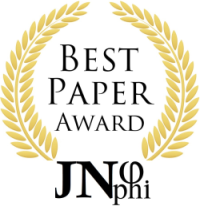Where and What: Two Experiments for Dualism
Abstract
In 2007, two experiments that have now become very famous have appeared in the neuroscientific literature. With over of one thousand of citation, that moved neuroscientist to speculate about the self- representation and other conscious phenomena and to create new experiments, Henrik Ehrsson and Bigna Lengenhagger produce in two studies out of the body experiences in healthy subjects. The literature reports this kind of experience as consequence of neurological disease or drug use. In this article, I will prove that the where, and the what, of the out of the body experience and the normal experience are something different from the bodily one and I will argue in favor of some kind of dualism and, in particular, a dualism called property dualism.
Downloads
Metrics
References
Almog J. What am I? Descartes and the Mind-Body Problem. Oxford: Oxford University Press, 2001.
Botvinick M, Cohen J. Rubber hands 'feel' touch that eyes see. Nature 1998; 391:756.
Chalmers D J. The Conscious Mind: In Search of a Fundamental Theory. Oxford: Oxford University Press, 1996.
Crane T. Elements of Mind. Oxford: Oxford University Press, 2001.
Descartes R. Meditation VI, in Meditations on the First Philosophy, Cottingham J. (trans.). Cambridge: Cambridge University Press, 1996; 57–72.
Downloads
Published
How to Cite
License
Copyright (c) 2022 Andrea Bucci

This work is licensed under a Creative Commons Attribution-NonCommercial-ShareAlike 4.0 International License.
Authors continue to hold copyright with no restrictions.














